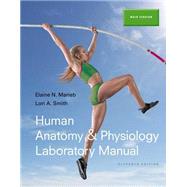For the two-semester A&P laboratory course.
All instructor resources for this title are available in the Instructor Resources section on the MasteringA&P site.
Helping millions of future healthcare professionals prepare for lab and practice lab concepts.
Revered for its thorough, clearly written exercises and explanations, Human Anatomy & Physiology Laboratory Manual has provided millions of future healthcare professionals with a complete hands-on laboratory and learning experience. The fully revised Eleventh Edition provides a more active, workbook-style approach that incorporates visual summaries, streamlines information, and engages students with hands-on drawing and review activities. New features include assignable Pre-lab Videos that introduce students to the lab and related equipment, and “Why this Matters,” which shows the relevance of lab activities to real-life and clinical examples. This edition is fully integrated with MasteringA&P, offering assignable visual media and activities that promote active learning and engage students.
For the first time, the lab manual is publishing alongside Marieb/Hoehn’s best-selling Human Anatomy & Physiology . Designed to meet the needs of the 2-semester A&P laboratory course, the manual can be used with any A&P textbook and is available in a customized edition, as well as in three conventional versions: Main (Eleventh Edition), Cat (Twelfth Edition), and Fetal Pig (Twelfth Edition).
Also Available with MasteringA&P ®
This title is also available with MasteringA&P – an online homework, tutorial, and assessment program designed to work with this text to
engage students and improve results. Within its structured environment, students practice what they learn, test their understanding, and
pursue a personalized study plan that helps them better absorb course material and understand difficult concepts. Students, if interested in purchasing this title with MasteringA&P, ask your instructor for the correct package ISBN and Course ID. Instructors, contact your Pearson representative for more information.








